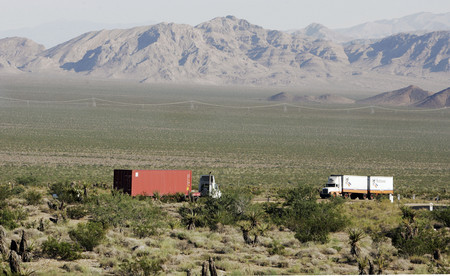Solar project’s foes plagued by ignorance

To the editor:
I have spent a lifetime in the Southwest studying plants and animals in relation to their environment and each other. I would like to comment on your Jan. 2 Associated Press story: “Tortoises slow sun power plan.”
The story says, “Government scientists have concluded that more than 6 square miles of habitat for the federally threatened desert tortoise would be permanently lost” if the solar power plant goes forward. I would like to know why they think that this solar power plant would render the site uninhabitable for desert tortoises. I would also like to see any data that supports their conclusion and how it was obtained.
The story goes on to say, “The Sierra Club and other environmentalists want the complex relocated to preserve what they call a near pristine home for rare plants and wildlife.” Public land in Southern California was subjected to uncontrolled grazing by livestock for more than four centuries. When Spain ruled Southern California, cowhides were the chief export. Senate document 199, The Western Range, describes the severe over-grazing of public land between World War I and the Taylor Grazing Act. The only pristine land is land that is inaccessible to livestock.
I visited this site many times between 1969 and 1972 while I was studying the vegetation of the McCullough Mountains for my master’s thesis. At that time the variety and abundance of wildflowers made this site a riot of color in a good flower year. The last time I visited this site in a good flower year, weedy grasses from the Mediterranean or invasive mustard had replaced the desert flowers. When I worked for the U.S. Forest Service, I spent two years developing criteria for measuring the departure of rangeland from the pristine condition. Dominance of a site by invasive weeds is about as far from pristine as you can get.
The story notes that, “In November, federal and state biologists reviewing the plan proposed that the company catch and move the tortoises and preserve 12,000 acres elsewhere.” Transplanting tortoises is not a solution, and it is a disaster for the tortoises being transplanted. Tortoises are fiercely territorial. If a tortoise invades another’s territory, they will fight until one tortoise succeeds in flipping the other tortoise on its back. It can’t turn over and will lie on its back kicking until it dies from dehydration or starvation, and for a tortoise that is a long time. If a coyote or a fox comes by, it will eat the legs. If a biologist comes by and sees the carcass, he will record it as a predator kill.
A scientist once told me he was hired to remove tortoises form the construction site for a new reservoir. He said he put radios on some of the tortoises so he could track them. As soon as these tortoises were released, they started walking in the direction of the reservoir site. No tortoise remained where it was released. No tortoises survived to return to their original habitat.
The story continues, “The Sierra Club wants regulators to move the site closer to Interstate 15 … to avoid what it says will be a virtual death sentence for the tortoises.” I can’t understand why moving this site a short distance could make the difference between life and death for the tortoises.
And this: “Roy Averill-Murray, the Fish and Wildlife Service’s desert tortoise recovery coordinator, said there are insufficient data to make judgments about the population of the Bright Source sit.” After spending 20 years and many millions of dollars, the recovery team doesn’t know how many tortoises they have out there? Tortoises can be counted easily and accurately. Tortoises live in burrows. It is easy to distinguish between occupied and unoccupied burrows. All they have to do is count the occupied burrows. If they do not know how many tortoises they have, how do they know whether their recovery efforts are succeeding or doing more harm than good?
The story says, “A 2006 Fish and Wildlife Service report found the tortoise population dropping in parts of a four-state region that included California.” This is a confession of failure. The site has 4,000 acres and only 25 tortoises. This is one tortoise per 160 acres. Before tortoises were listed as a threatened species, there was a well-studied population on the east side of the McCullough Mountains, a short distance from the BrightSource Energy site.
The population at this site was 10 acres per tortoise, which was about average for tortoise populations at that time. In the early ’30s, during a prolonged drought and at a time when the range was notoriously overstocked with cattle, Kristine Berry estimated that some tortoise populations in California had a density of three tortoises per acre. This indicates to me that the recovery team doesn’t have a clue about restoring tortoise populations.
This tiny population is probably doomed to extinction regardless of any action taken. With a population density of only four tortoises per square mile, tortoises may have a difficult time finding a mate. They spend 85 percent of their time in their burrows. With a short work week, a slow gait and an awful lot of ground to cover, the chance of a tortoise finding a mate is not good. The age of the youngest tortoise in this population would tell us how many years it has been since there has been any recruitment to this population.
It is absurd that a miniscule population that has no real significance and no future can hold up a multimillion-dollar project that benefits both the economy and the environment.
VERNON BOSTICK
LAS VEGAS












